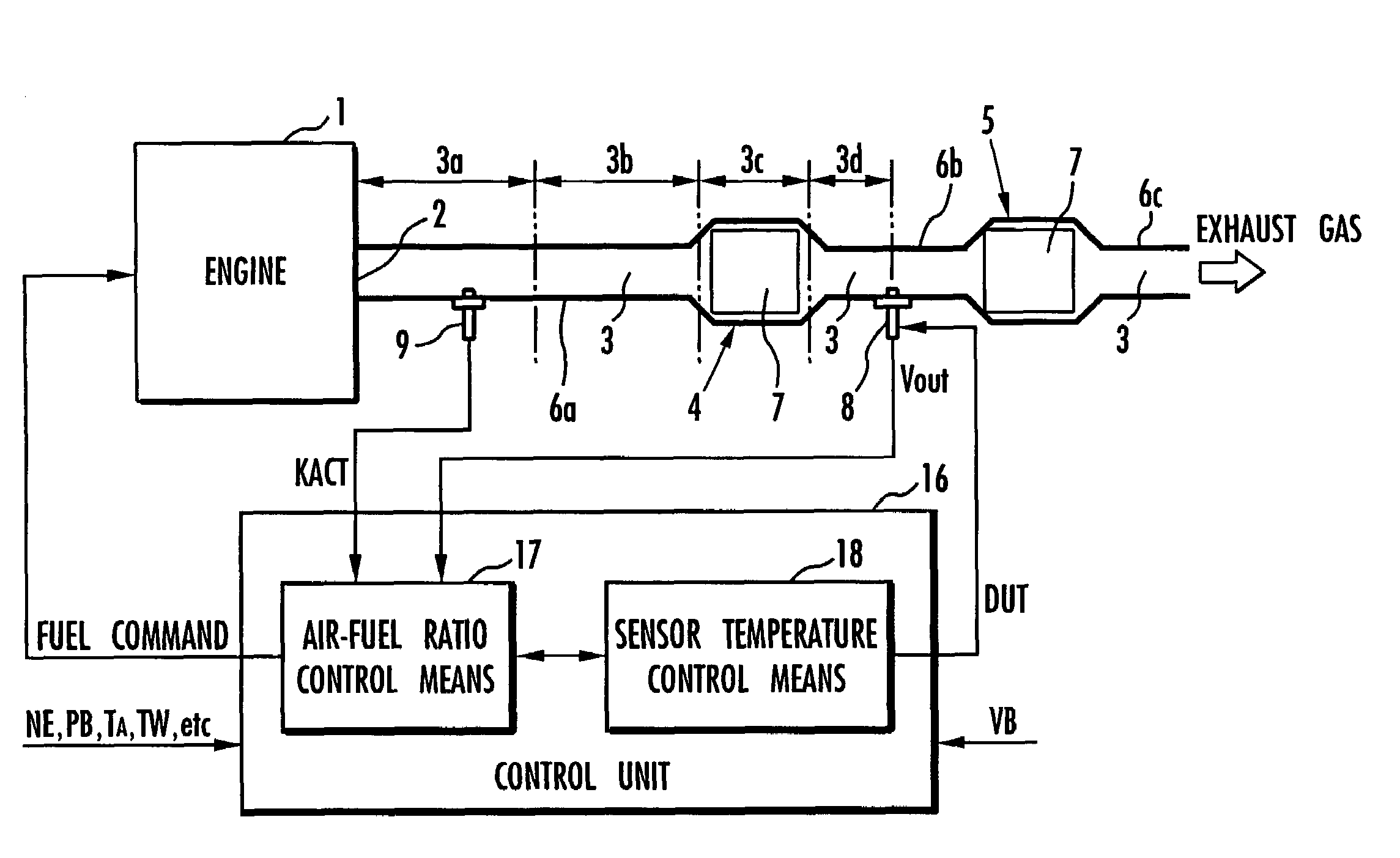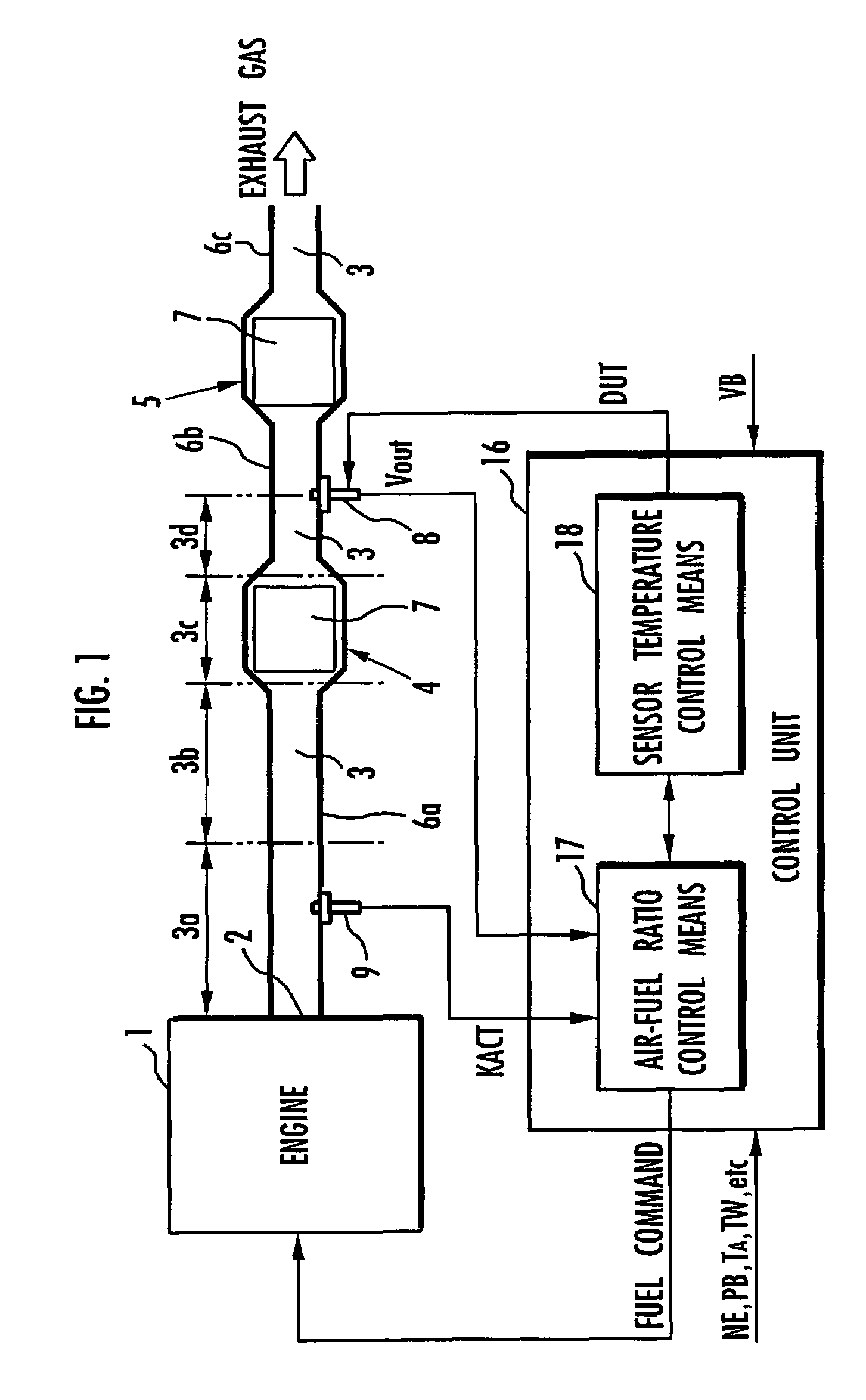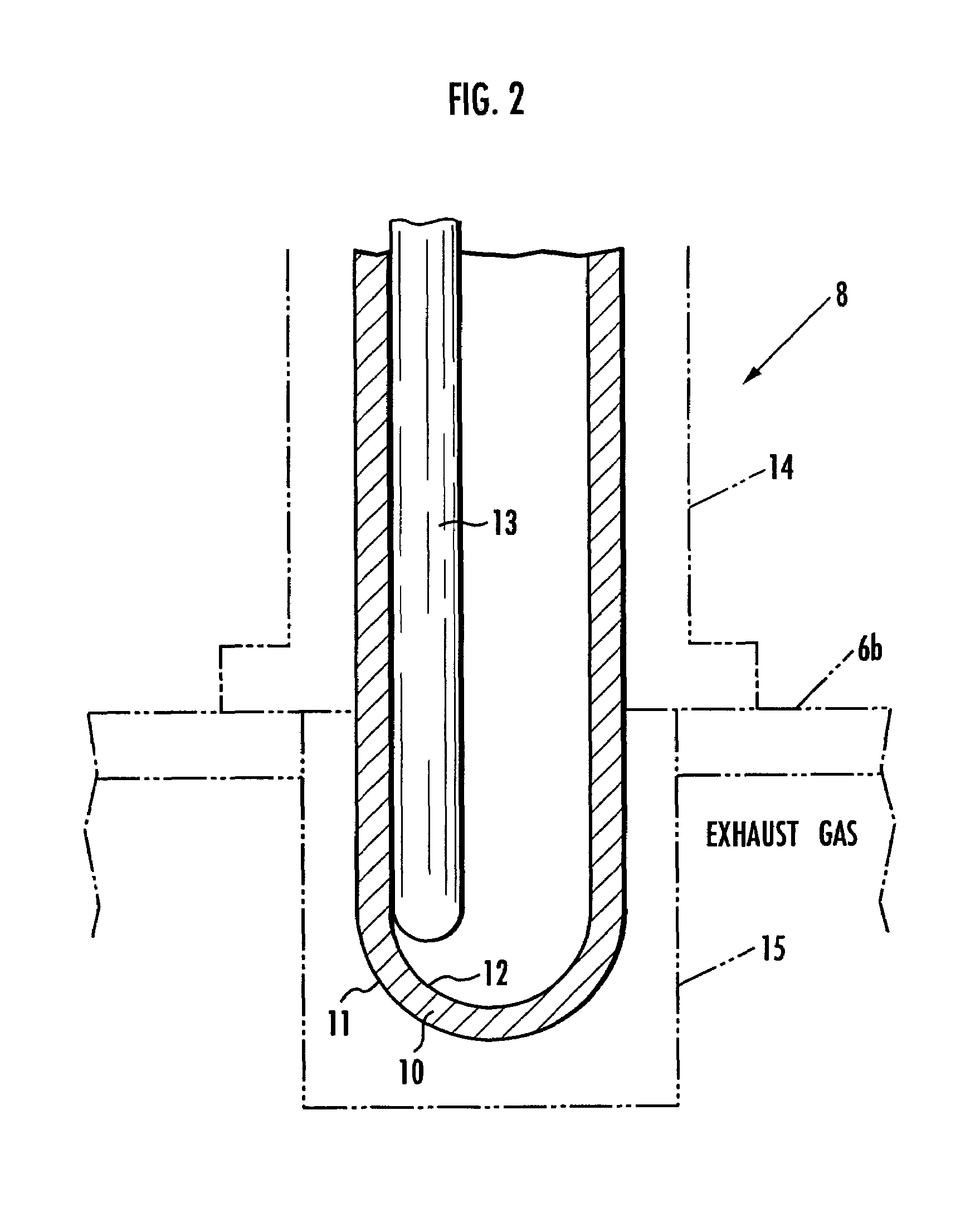Device and method of controlling exhaust gas sensor temperature, and recording medium for exhaust gas sensor temperature control program
a technology of exhaust gas sensor and temperature control, which is applied in the direction of electrical control, process and machine control, instruments, etc., can solve the problems of damage to the heater and the active element, the difficulty of stably controlling the temperature of the active element of the exhaust gas sensor at a desired temperature, etc., and achieves the effect of stably controlling, increasing the stability of the temperature of the active element, and stably controlling
- Summary
- Abstract
- Description
- Claims
- Application Information
AI Technical Summary
Benefits of technology
Problems solved by technology
Method used
Image
Examples
Embodiment Construction
[0114]A first embodiment of the present invention will be described below with reference to FIGS. 1 through 13. FIG. 1 shows in block form an overall arrangement of the apparatus according to the first embodiment of the present invention. In FIG. 1, an engine (an internal combustion engine) 1 mounted on an automobile, a hybrid vehicle, or the like combusts a mixture of fuel and air and generates an exhaust gas, which is discharged into the atmosphere through an exhaust passage 3 communicating with an exhaust port 2 of the engine 1. The exhaust passage 3 incorporates therein two catalytic converters 4, 5 disposed successively downstream for purifying the exhaust gas emitted from the engine 1 and flowing through the exhaust passage 3. The exhaust passage 3 includes a section upstream of the catalytic converter 4 (between the exhaust port 2 and the catalytic converter 4), a section between the catalytic converters 4, 5, and a section downstream of the catalytic converter 5. These secti...
PUM
| Property | Measurement | Unit |
|---|---|---|
| temperature | aaaaa | aaaaa |
| temperature | aaaaa | aaaaa |
| temperature | aaaaa | aaaaa |
Abstract
Description
Claims
Application Information
 Login to View More
Login to View More - R&D
- Intellectual Property
- Life Sciences
- Materials
- Tech Scout
- Unparalleled Data Quality
- Higher Quality Content
- 60% Fewer Hallucinations
Browse by: Latest US Patents, China's latest patents, Technical Efficacy Thesaurus, Application Domain, Technology Topic, Popular Technical Reports.
© 2025 PatSnap. All rights reserved.Legal|Privacy policy|Modern Slavery Act Transparency Statement|Sitemap|About US| Contact US: help@patsnap.com



